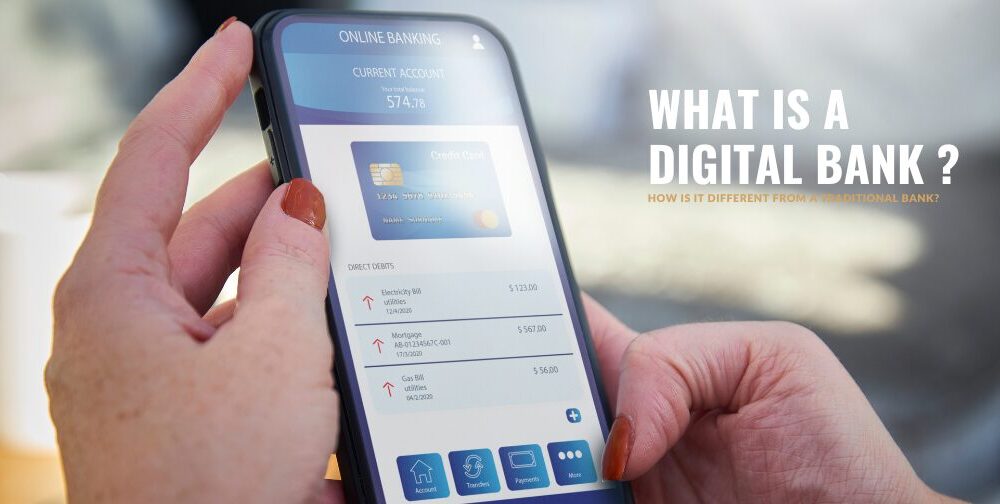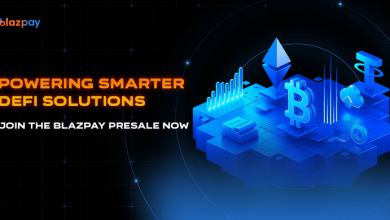What is a Digital Bank and How is it Different From a Traditional Bank?

You’ve heard the term “digital banks”, but like many, you might not fully understand what it means. Is it just a bank with a decent mobile app? Is it a completely new type of financial institution? The rise of neobanks and other digital-first platforms have further muddied the waters, leaving millions wondering what distinguishes a “digital bank” from a traditional bank.
This guide will define digital banks, how they differ from traditional banks, and why the future of digital banking will look vastly different thanks to emerging decentralized banking technologies.
In 2025, the definition of “bank” is being challenged.
Put best, a digital bank is a type of financial institution that operates entirely online, with no reliance on physical branches. This means people can access their accounts, make payments, transfer funds, and manage all of their finances virtually, through a mobile app or website.
The absence of physical locations is a defining characteristic, yet it’s important to state that most digital banks still offer traditional banking services. This includes opening current and savings accounts, sending and receiving payments, and applying for loans, all of this through a smartphone, tablet, or computer.
Under the digital bank banner are “neobanks”. This is a particular type of fintech company that offers banking services via partnerships with existing banks, or by obtaining independent banking licenses. Their goal is to provide a more user-friendly and efficient alternative to traditional banking, through improved user interfaces and experiences.
As we’ll explain, neobanks are just one step in an ongoing evolutionary process for digital banking.
How Digital Banks Differ From Traditional Banks
There are several critical differences between the two, for example:
Physical Infrastructure vs. Digital-Only Access
Traditional banks are reliant on a network of physical branches for things like customer service, account management, and transactions. The infrastructure comes with significant overhead costs, like rent, utilities, and staff. These costs get passed on to customers through account fees. For traditional banks, in-person interactions are considered essential for many services, such as opening accounts, applying for mortgages, or resolving disputes.
Alternatively, Neobanks offer app-based access and digital-first experiences, leveraging modern technology to automate processes, reduce costs, and deliver 24/7 access and convenience for banking services. While customer support might be limited, they usually offer phone, live chat, or email support, as well as pre-written support guides.
Legacy Systems vs. Modern Tech Stacks
Traditional banks operate on what we call “legacy infrastructure”, which is a polite way of saying old systems that are complex, inflexible, and difficult to update. This, naturally, leads to inefficiencies, delays, and security vulnerabilities. When trying to do modern banking with outdated tools, optimal performance is unlikely.
By contrast, neobanks use modern APIs and cloud-native systems to deliver much faster and more flexible user experiences. They can also integrate with other fintech services in a modular way to offer more personalized services and quickly adapt to changing customer needs. However, even neobanks depend on legacy rails for core banking functions like regulatory compliance and fund transfers. Behind the sleek and modern interfaces, there are still ties to legacy infrastructure.
Fee Models and Flexibility
Traditional banks are notorious for their high or hidden fees for things like monthly maintenance, overdrafts, ATM withdrawals, and wire transfers, among others. These fees can quickly accumulate.
Neobanks typically offer lower fees, with some even advertising fee-free banking. However, while avoiding fees like monthly maintenance, they may put limits on free ATM withdrawals, charge fees for some transactions, or offer tiered paid services through a kind of “freemium” model. The transparency of neobanks is often a lot better than with traditional banks, yet it’s essential to read the fine print.
User Experience vs. User Control
One huge friction that traditional bank account holders face is the fact that banks can freeze accounts, block payments, and restrict withdrawals. This means that users never have true ownership of their funds and are essentially entrusting their money to the bank.
Neobanks have significantly improved the banking experience, with apps that are well-designed and intuitive, with helpful features for budgeting, tracking spending, and receiving instant notifications. Opening accounts and managing services are made easier too, yet with all these improvements, they still operate on the same regulatory framework as traditional banks. That means they face the same rules and limitations.
Deobanks: The Next Leap in Digital Banking
The digital banking model, neobanks included, is centralized and custodial. This creates a situation where users are still reliant on a third party to manage their funds and control access to their accounts. What if there was a new way, one that combined the convenience of digital banking with the autonomy and transparency of decentralized finance?
That’s where deobanks come in.
A deobank is a decentralized, blockchain-based financial platform that delivers digital banking services with transparency, autonomy, and flexibility. They leverage decentralized technologies to offer greater financial control to users.
Here’s what makes Deobanks different:
- Non-custodial or hybrid account options: Non-custodial wallets give users full control over their private keys and funds, while hybrid models combine custodial and non-custodial features.
- On-chain data transparency: All transactions are recorded on a public blockchain, delivering greater transparency and auditability.
- No reliance on legacy financial infrastructure: Deobanks are built on new infrastructure, reducing reliance on intermediaries and legacy rails.
- Borderless and programmable money: Stablecoins and smart contracts give users access to a global financial system with automated financial processes.
Maksym Sakharov, Group CEO and Co-founder of WeFi, the leading deobank provider, explains how digital bank misunderstandings help shape WeFi’s approach to “banking”.
He says, “People think ‘digital bank’ automatically equates to greater control and transparency for the user. They assume that because they’re using a sleek app, they have more power, but in reality, many digital banks are centralized entities operating under the same constraints as traditional institutions. That’s why WeFi focuses on building a platform that empowers users with self-custody, transparency through on-chain data, and the ability to participate in a permissionless financial system.”
The Future of Banking Might Not Look Like a Bank at All
The future of digital banking will move quickly beyond banking licenses and centralized control. Self-custody wallets, DeFi protocols, and programmable smart contracts have created a new class of financial platforms that look like banks, but don’t act like them. They’ll offer savings, lending, and payments, but in a decentralized and permissionless manner.
WeFi’s Head of Growth, Agne Linge, explains that “From WeFi’s perspective, a deobank is judged on its commitment to decentralization, user empowerment, and transparency, as well as the tools to manage their finances without intermediaries. Deobanks are the logical next step for digital banking, creating a more fair and accessible financial space for everyone.”
Rethinking What a Bank Can Be
Times have changed. We’ve progressed from physical branches to neobanks, and now deobanks, with each step bringing us greater convenience and accessibility. The ultimate goal, however, should be empowerment and user control.
We must rethink how finance works in a decentralized world, and that may mean that tomorrow’s digital banks are not banks at all.

Source: What is a Digital Bank and How is it Different From a Traditional Bank?




